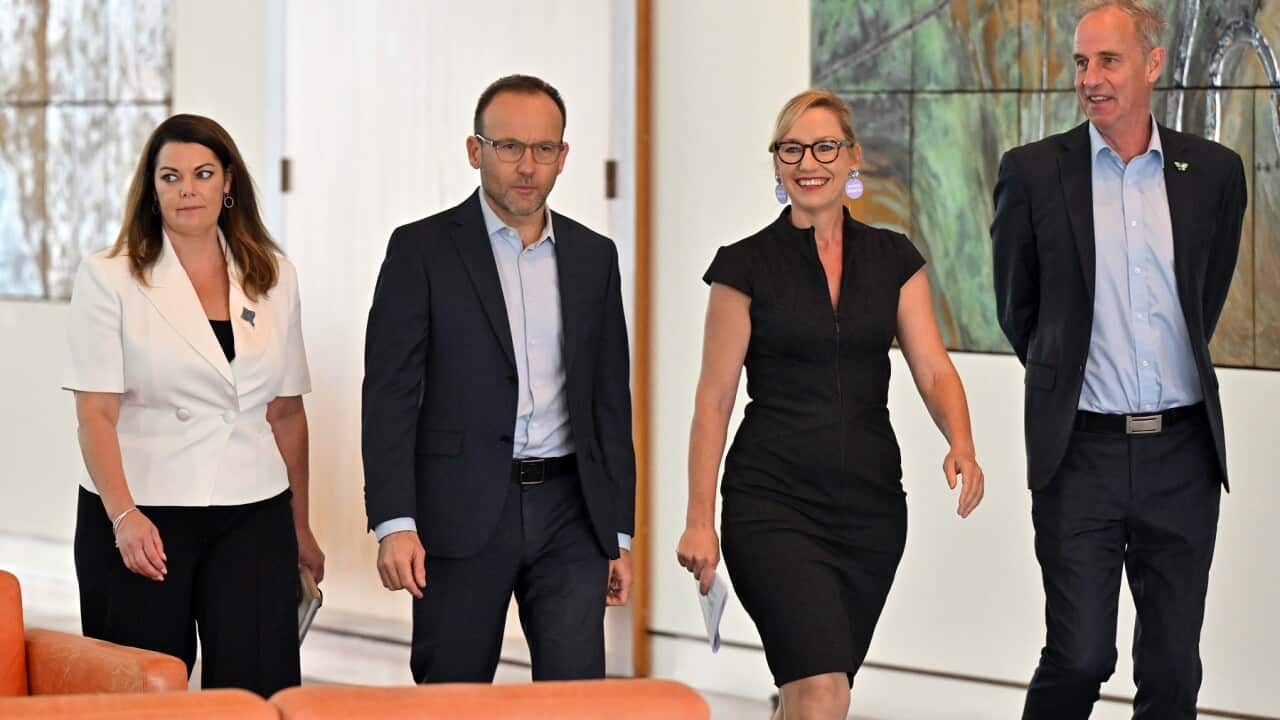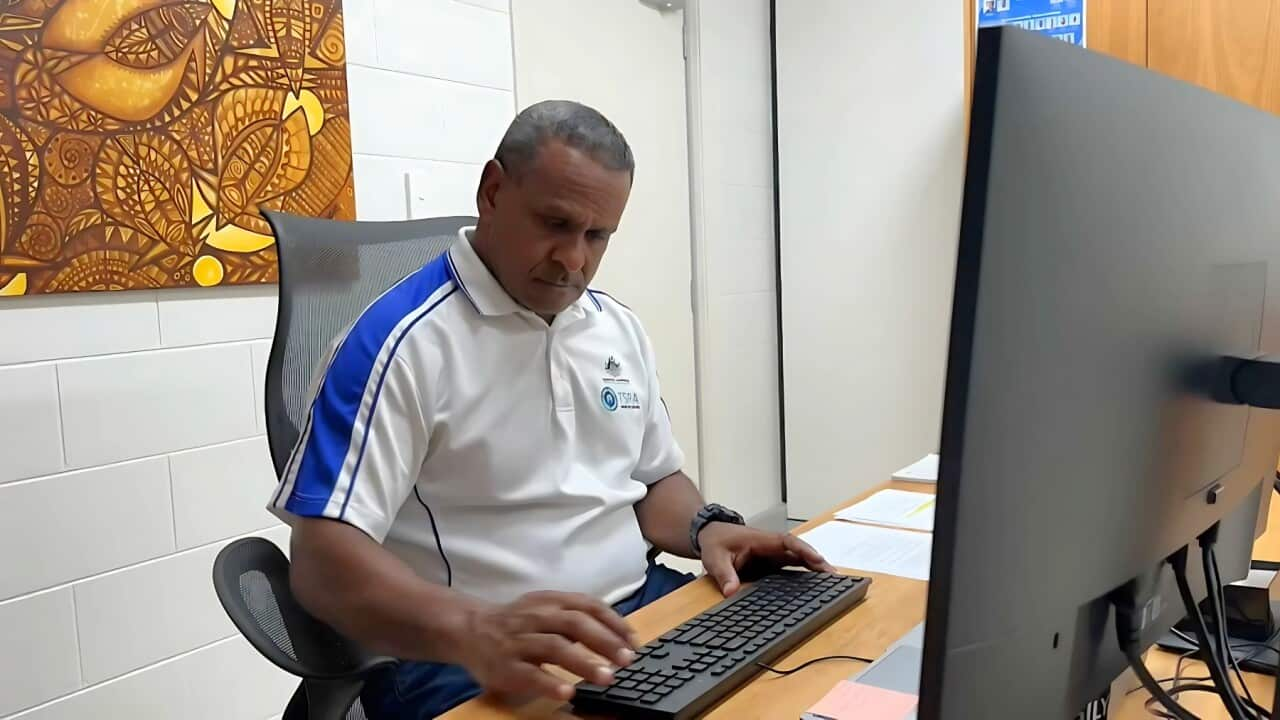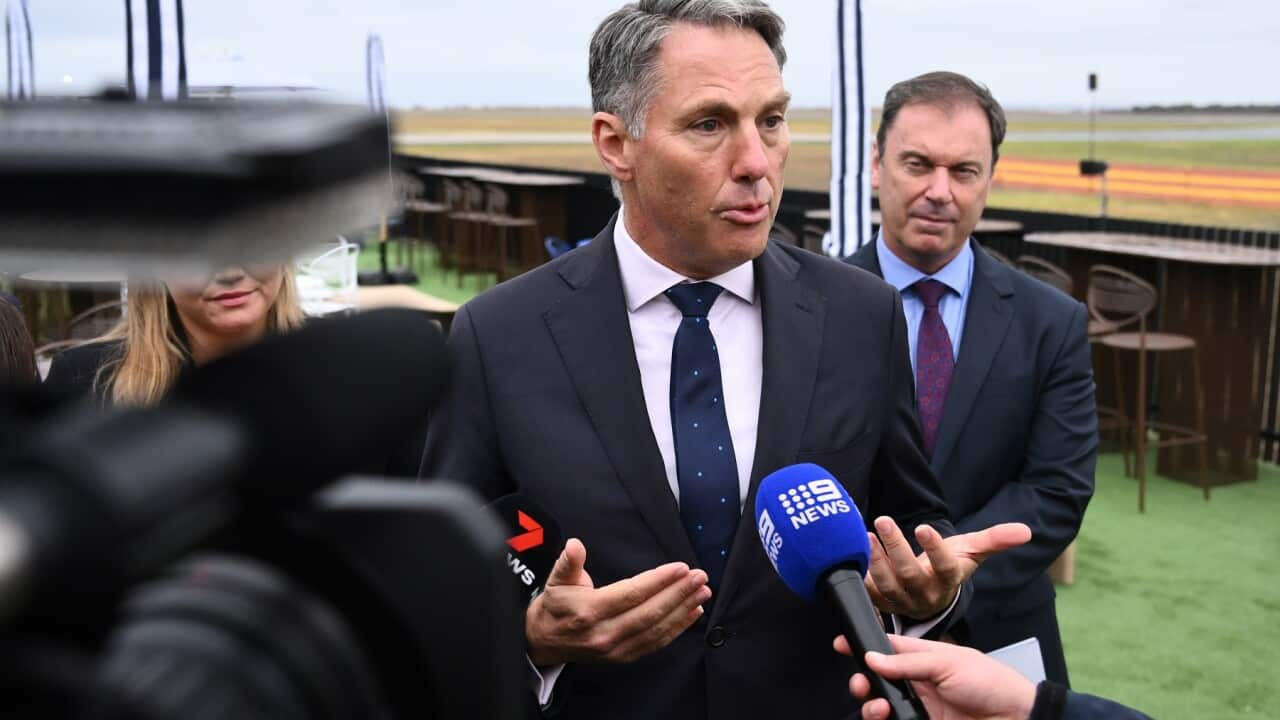TRANSCRIPT
The Greens.
Just like the colour.
It's one of the only parties without ‘party' at the end of its name - just the Greens.
They're a minor party, but the biggest minor party in the Parliament, holding four seats in the House and eleven in the Senate.
But where did the Greens come from and who are they now?
Senior Lecturer at the Australian National University Jill Sheppard says the Greens grew from Australia's environmental protest movement in the 1970s.
"There were some key events in the early days of The Greens, particularly in Tasmanian politics, where no one in politics was defending the interests of the environment."
Those included native logging and proposals for dams to be built.
Some of the protest groups organised into the United Tasmania Group, which the Greens claim was the first 'green' party anywhere in the world.
In 1992, state-based parties banded together to form the Australian Greens.
Bob Brown was the party's first leader.
He says the environment is the priority.
"We're highly distinguishable from the other parties by having the environment, our environmental policies, also frontline because they are ultimately social justice policies."
But there has always been a focus on social issues.
"Environmental protection and social justice, democracy and peace, those four pillars of the Greens charter worldwide and that followed through to the world's first Greens Party Congress in Canberra in 2001 in which that was adopted internationally."
Government transparency, voluntary assisted dying, and women's rights were some of the issues Bob Brown says he fought for during his time in Tasmanian parliament.
These days, the party platforms issues like Australia's refugee intake, the war in Gaza, the recognition of Palestinian statehood, access to healthcare, and housing affordability.
In 2010, the Greens teamed up with Labor to allow Julia Gillard to form a minority government.
They agreed to oppose any motion of no confidence in the government from non-Greens members.
But the deal ended in 2013 when the Greens accused Labor of siding with the mining industry.
This election, the Greens policies include:
- Putting dental on Medicare
- Increasing taxes on billionaires
- Ending negative gearing
- And stopping all new oil and gas projects.
The Greens have never been in power in federal parliament, and its unlikely they will have a majority any time soon.
So why do people vote for them?
"I think voting for the Greens, particularly when they've had increasing success in the Senate, just feels like a normal option for a lot of voters. Their achievements are all conducted behind closed doors. The Greens can very rarely stand up and say, look at what we've done. But what they do is negotiate constantly, every day with the government, whether that's Liberal or Labor, just to moderate reforms that they don't they don't agree with. They would say that they've had successes in bringing the treatment of asylum seekers to public attention and to keeping it in front of the Parliament."
Although Bob Brown is hopeful of seeing a Greens government in the future.
"We expect that there'll be Green governments in the future as the environmental and social crises that the planets facing at the moment get rapidly worse."
The last election was particularly good for the Greens; they went from one representative in the lower house to four and gained three senate seats.
Currently, the party is led by Adam Bandt.
He's been in Federal Parliament for 15 years as the Member for Melbourne and has been leader of the Greens since 2020.
Before becoming a politician, he was a lawyer.
So how does the party stack up to its original manifesto?
"The Greens, more than any other party in Australia at the moment, have had to do a huge makeover in terms of how they operate today. They've gone from being a social movement with one core issue at their heart to being a professional political party that has to campaign, has to have positions on a bunch of different things, has to vote on legislation, has to manage a party room that is getting bigger every election and has a lot of contrasting views. They used to be very willing to air their grievances in public to, you know, have sort of public debates about their internal conflicts, and they've had to find that as you become bigger, that's just impossible. And so they they do have to now deal with the egos, with the competing ideologies, you know, with the competing ambitions of their members. And that's not fun. Being a political party is a really tough job. And managing a political party, as Adam Bandt is finding, is inordinately difficult."













